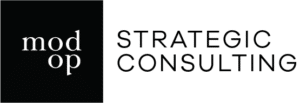One month? Two months? Maybe three?
Most data suggest COVID-19 will peak within three months in the United States,
but it could be with us for much longer, with possible new resurgences over the
next 18 months. Pandemics will recur. What
then, should you be asking yourself, as a business leader?
Advice from The Art of War –
“Stand like a mountain, flow like the water” – rings as true today as it was when
it was first attributed to Sun Tzu more than two millennia ago. It’s what great
generals, crocodiles and 3M each have in common – an ability to adapt and weather
change in turbulent times. It may take slightly different forms and flavors,
but the ability to reconfigure your strategic plan to account for new
circumstances is your inoculation. Listen in.
Be a crocodile
Be patient and indiscriminate.
Crocodiles aren’t picky eaters. They’ll eat almost anything they can find and
sink their teeth into. In other words, diversification
of your revenue stream is key. Invest in strategic planning programs that
help you surface business opportunities. Even if they are initially costly,
with the right process and the right team, revenue will come. Speak to your customers, what are they telling
you? Distill what they have told you into business
opportunities. Map your industry’s landscape, where do you fit in the
bigger picture? This exercise will help you identify whitespace so that, like
the crocodile, you can attack opportunities that surface. I can guarantee
you will, at the very least, have a much better idea of where you stand today.
The likely outcome is you will be positioned to respond (or even preempt)
market shifts with new products and services your customers want, with an
ability to scale, stop or pivot. You will undoubtedly be positioned for the
future.
- Speak to your customers to surface needs and opportunities
- Map your industry to identify whitespace

Figure
1 – The Innovator’s Dilemma Curve
Be 3M
Experiment and diversify. What do
you know 3M for? Post-It Notes? N95 particulate respirators? Home improvement
hooks? Or jet engine adhesive? 3M is a master of experimentation and was able to boost its market cap by 5 percent
while the rest of the industry declined by 45 percent in the early 2010s. It
has experimented so much that some ideas (opportunities) were bound to work.
Create this culture of idea generation
where failure is tolerated in exchange for shared
learnings. Allow your employees to collaborate and share ideas (Google is
known for this, too). If those ideas are widely supported, let small teams run
with them backed by a small amount of
capital, allowing them to scale. This will either accelerate failures and turn
them into learnings with feedback loops, or create new success stories. Rewarding
experimentation makes the organization more robust by filtering out what
doesn’t work and adopting products and services that fit the market. A kind of
natural selection.
- Generate
ideas and experiment with feedback loops - Fund new ideas
for products and services

Figure
2 – Feedback loop
Be a general
Be disciplined and plan. “If you dislike
change, you’re going to dislike irrelevance even more.” Remember that quote
from General Eric Shinseki? Identify your objectives and plan your course of
action in aiming to reach them. You’ve spoken to your customers, distilled
opportunities, mapped your current position in the greater industry and encouraged
your team. It’s time to frame your action plan. Place the business opportunities against the needs of your audience (employees and customers), this will help
you frame your strategy. Your mission and vision will fasten this strategy into
place. Start with the end in mind and use a roadmap
with clear milestones to measure velocity and growth.
- Frame your strategy through needs and business
opportunities - Use a roadmap to measure progress

Figure
3 – Roadmap
Summary
The process of adaptation requires
first and foremost flexibility and
discipline. Most companies plan, but successful companies assume everything
will not always go according to plan. They’re able to adjust plans midstream
when facing an infinite number of possible random events with a disciplined
approach – and rigorous application of planning processes and tools. As a
result, these more agile companies are best equipped to maintain relevance and a
competitive edge when faced with significant market disruptions.
As Sun Tzu also reminds us, every
battle is won or lost before it is ever fought.

















